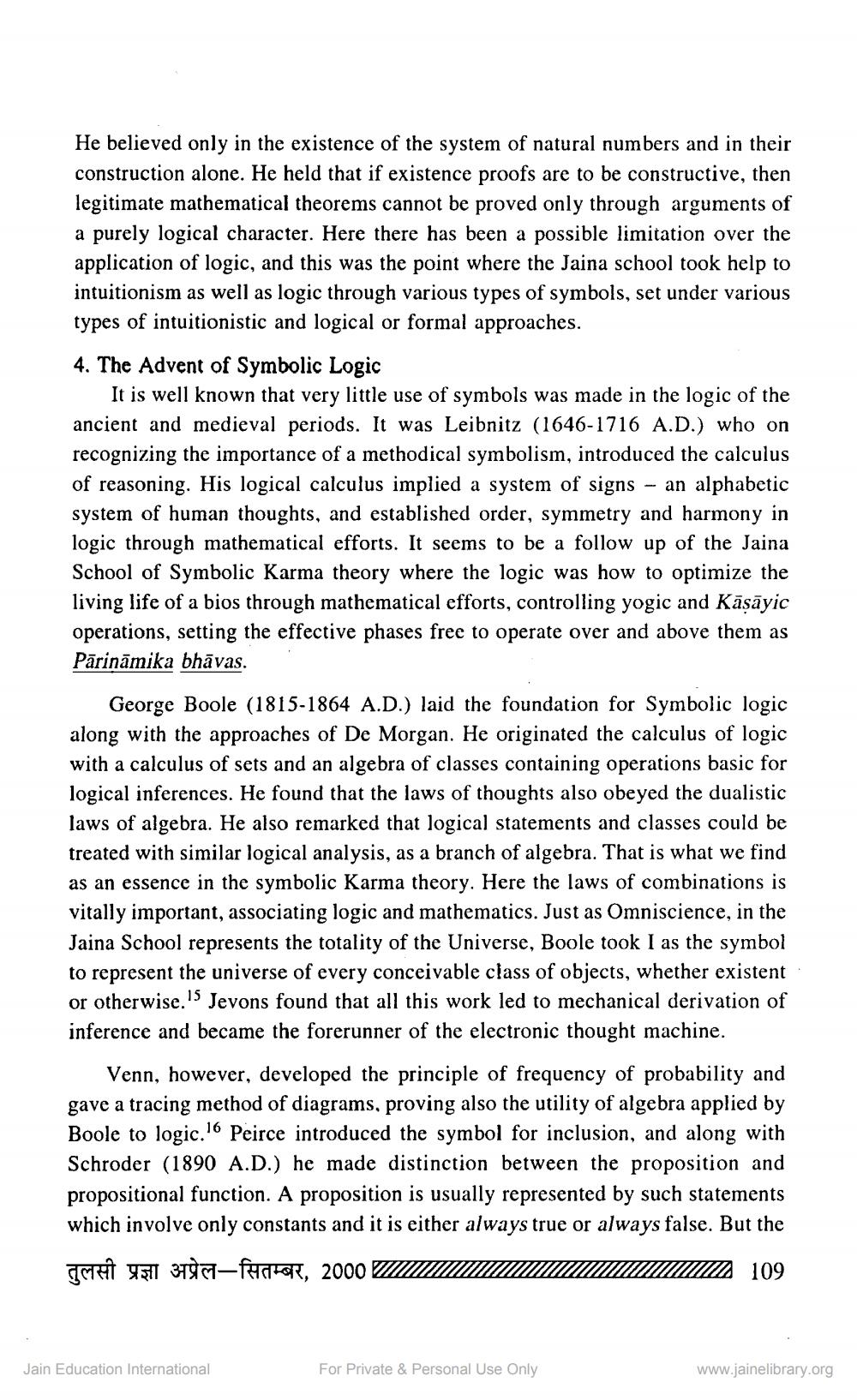________________
He believed only in the existence of the system of natural numbers and in their construction alone. He held that if existence proofs are to be constructive, then legitimate mathematical theorems cannot be proved only through arguments of a purely logical character. Here there has been a possible limitation over the application of logic, and this was the point where the Jaina school took help to intuitionism as well as logic through various types of symbols, set under various types of intuitionistic and logical or formal approaches.
4. The Advent of Symbolic Logic
It is well known that very little use of symbols was made in the logic of the ancient and medieval periods. It was Leibnitz (1646-1716 A.D.) who on recognizing the importance of a methodical symbolism, introduced the calculus of reasoning. His logical calculus implied a system of signs - an alphabetic system of human thoughts, and established order, symmetry and harmony in logic through mathematical efforts. It seems to be a follow up of the Jaina School of Symbolic Karma theory where the logic was how to optimize the
nathematical efforts, controlling yogic and Kāsāyic operations, setting the effective phases free to operate over and above them as Pārināmika bhāvas.
George Boole (1815-1864 A.D.) laid the foundation for Symbolic logic along with the approaches of De Morgan. He originated the calculus of logic with a calculus of sets and an algebra of classes containing operations basic for logical inferences. He found that the laws of thoughts also obeyed the dualistic laws of algebra. He also remarked that logical statements and classes could be treated with similar logical analysis, as a branch of algebra. That is what we find as an essence in the symbolic Karma theory. Here the laws of combinations is vitally important, associating logic and mathematics. Just as Omniscience, in the Jaina School represents the totality of the Universe, Boole took I as the symbol to represent the universe of every conceivable class of objects, whether existent or otherwise. Is Jevons found that all this work led to mechanical derivation of inference and became the forerunner of the electronic thought machine.
Venn, however, developed the principle of frequency of probability and gave a tracing method of diagrams, proving also the utility of algebra applied by Boole to logic.16 Peirce introduced the symbol for inclusion, and along with Schroder (1890 A.D.) he made distinction between the proposition and propositional function. A proposition is usually represented by such statements which involve only constants and it is either always true or always false. But the greit 4511 37977-faktore, 2000 UN
u
109
Jain Education International
For Private & Personal Use Only
www.jainelibrary.org




